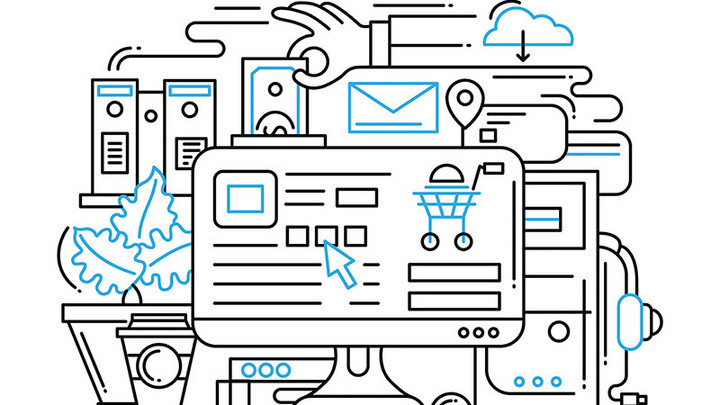Take Care of Your Business – and Let an ESP Take Care of Your Emails
Emailing may be a basic tool for your marketing and customer communications, but is it your core business? Magnus Eén from Westwing describes how online companies can find their balance between in-house and outsourced expertise.

© LeoWolfert | istockphoto.com
DOTMAGAZINE: Why did Westwing choose to outsource transactional emails to an email service provider (ESP)?
MAGNUS EÉN: I joined Westwing about four years ago, and that was done some years before I joined. But I think that the decision back then was made because we didn’t have any tracking or statistical follow-up on our transactional emails. That was the main reason, alongside not having the responsibilities in-house, because we didn’t have the resources back then to actually take care of that.
Related Stories


Sending transactional emails requires the same technical set up as sending bulk emails, and then it doesn’t really make much sense for us to set all that up internally to use only for transactional emails.
Westwing was, and maybe still is, a start-up, by nature anyhow. And back then we rapidly grew the business. So right from the beginning, we understood that marketing emails, the bulk emails, could not be handled in-house. But transactional emails were sent directly from the web shop. And I think that was more out of convenience because the web shop application that we used back then supported that. There was not any burning need to migrate that at once when the business was set up, where for bulk emails there was.
So I guess it was just setting priorities that we waited a bit, but later also migrated the transactional emails to an email service provider.
DOT: Were there any concerns about outsourcing the transactional emails?
EÉN: I think it’s the same reason that we continue to have the transactional emails outsourced: That it would be a lot of effort on our side with minimal gains.
But outsourcing makes our technical landscape easier, because it’s one less component to keep track of. We have a plugin from our ESP for all relevant statistics and that makes it easy. We can access all the deliverability follow-ups, and everything in one place with regards to email. As well as that, I think now also with DMARC (Domain-based Message Authentication, Reporting and Conformance), it makes things easier because, basically, it makes the streams easier to track down.*
DOT: How do you work with your ESP when it comes to reporting? Do you have a defined reporting structure with the ESP?
EÉN: Not really. When it comes to follow-up, we do 100 percent here internally. We receive all the tracking data, of course, but also on top of that, I think we’re a special case because we also download the mail server log files directly from our ESP. This allows us to build very detailed and granular reports about mail delays, deferrals, etc. So actually, it’s only when we have issues which we cannot control ourselves that we need to get in touch with them, and by now we have such a good relationship with them that it’s usually not an issue. But for reporting we do everything in-house.
DOT: So you outsource the expertise of deliverability to one source, but don’t give up the control of the tracking. That means you can keep control of the whole thing, but the tasks requiring expertise are done by someone who is really an expert in just that. It sounds like a good balance.
EÉN: I totally agree. I think Westwing is kind of a special case, because they actually invested in hiring me! I used to work at an ESP before, but Westwing figured that email is such an important revenue channel for us requiring the knowledge and responsibility – but not necessarily the infrastructure – in-house. I think that’s a rare case, to be honest. It probably only applies in very email-intense companies.
I think one of the benefits of using an ESP for other companies, is that they actually get the expertise as part of the package. Another aspect is the reporting etc. – an email service provider should be able to give you better reporting and an overview of how your transactional emails work and perform, rather than having to set up that in-house.
Of course, you’re more flexible in-house. If we were to do the transactional and also bulk send-outs here, we would have access to all the log files etc., but it’s a huge infrastructure to host and you would need a lot of effort to do it at the scale that we are sending emails and transactional emails. So we think this is a good compromise: We have me, who’s responsible here for all the follow-ups and making sure that everything runs. And then we have the infrastructure outsourced using our ESP.
DOT: If a company doesn’t want to invest a lot in special resources, would you recommend that the ESP does the reporting for them?
EÉN: Right. Most email service providers these days have deliverability reporting because it’s such an important topic. It should be included to a certain extent in the basic packages by all email service providers.
I mean, just looking at open rates etc. could give you a hint about whether something is working or not. So yes, I do think that having an email service provider solves a lot of those challenges that you would have if you did it in-house.
DOT: You have previously mentioned arguments for using an in-house solution, such as dependency, flexibility, not needing to synchronize data with an external third party, and costs. But with your structure, you could neutralize those arguments to some extent, because you would still be in control and you would not use your flexibility. Is that correct?
EÉN: Yes. I mean, we send daily newsletters. If someone from the management team doesn’t receive the daily newsletter shortly past 8, they will email the CRM team and ask why the newsletter is late. We have different segments, and five-minute delays to our VIP customers do get investigated. So I think we are a super special case, because we tend to focus on the urgency that people should visit our site at the starting time of our sales.
We decided on 8 o’clock because that’s the time when most European people are on their way to work or have just arrived at work. You always check your phone on the bus, you check even in your car (I wouldn’t recommend that though, but people do!). So there is this timeframe in the morning where people tend to be active. And just because of that, if something goes wrong at 8, it’s really annoying to call a customer care person, like a first level guy at the email service provider, who needs five minutes to understand the issue, then yet another five minutes to escalate, and then that guy needs five minutes to boot up the computer and check things. I’ve never had a case where you need less than 15 minutes for us to get started. And that’s the dependency we’re talking about, and that’s actually one of the huge arguments against us using an email service provider, because if something happens we feel that we really need to get in touch with the right person in order to have action quickly.
Over my four years here, we luckily have developed a relationship with our ESP that means we have direct phone numbers and they know that when we call and tell them this is a priority-one case, they jump on the issue directly. So we’ve sort of solved that. But for smaller companies that cannot pay for 24/7 support or in other cases, this dependency might be very frustrating. So that’s why I put dependencies there and as I just said, given that Westwing have prioritized fast delivery, the dependency is also sometimes very frustrating.
And you also lose this flexibility. I don’t know a lot of email service providers that provide the raw log entries. So that’s again a special case. And if we had all that internally, we would be much more flexible, we could put all that into dashboards etc. Just as we have with all the monitoring for our web shop. If you have things in-house, you are super flexible. And maybe if you buy a standard package from an email service provider, you would compromise a little bit with that flexibility, not necessarily causing an issue or hindering you from doing what you wish, but still that’s one of the things that you gain from having things in-house.
DOT: So it really depends on the ESP you are working with. You have to have a good relationship, you have to trust them to be able to support you in the time you need the support. If you put it in a nutshell, arguments for using an in-house solution and arguments for using an ESP, why is the ESP solution the better one?
EÉN: I wouldn’t go building a car myself, because I don’t have the knowledge. And I think that applies to everything. That’s how society works today. We help each other and you have special areas. Our special area is to source really cool interior stuff, and offer that to our members. Yes, we’re using email as one of the channels and that’s one of the tools we’re using, but we’re also using push messages in our mobile apps for IOS and Android and that doesn’t mean that we need to develop a phone for people to look at them. I just think that we cannot be experts in everything, and somewhere we have to draw a line.
We want to focus technically and from a resource perspective on offering good products for our customers, because that’s our business. Email is not our business, even though we have discussed and I think we will forever continue to discuss whether we want to pull this in-house – mainly because of the dependencies. I know by talking to other people that all email service providers have bad days. And when our email service provider is having a bad day, this discussion always pops up: Why don’t we do this in-house? Then we could have just gone to the guy who’s in charge. But looking at a year or even longer period, those days or moments are very rare, and I would say it’s really not worth the effort for us to operate all that in-house just for those small moments.
But we might be a special case, because we want to push those messages as fast as possible. Because ideally, if the management team could decide, everyone would just receive the email at 8:00 a.m. sharp, so everyone would have an equal chance to open emails, to visit the web page, and see the sales. So the urgency for us to send out newsletters might be very different from the local hockey club that just wants to inform members about the upcoming games. There’s so many different types of businesses, there’s so many different use cases for email, that it’s hard to give a general recommendation.
DOT: We have understood the advantages and disadvantages of creating an in-house solution vs. outsourcing to an ESP and the different factors this decision may rely on. Many thanks for the differentiated insights, Magnus!
* Implementing DMARC is all about finding all sources (labeled as “streams” here) that send emails on behalf of your domain. The fewer sources you have, the easier it is to make sure authentication is right. This means that if we send all our customer email communication from one source, it is easier to make sure it is authenticated and compliant. If we had some in-house, some at a third email provider, and a survey tool on top, it would be harder to maintain authentication and DMARC compliance.
Magnus Eén will be a speaker at the CSA Summit 2018 on 18-20 April in Frankfurt, Germany.
Magnus has over 10 years’ experience in deliverability. Having previously worked for an ESP, he now applies in practice his accumulated knowledge for his current employer, Westwing. Westwing is an online Home & Living shopping club with daily sales communicated mainly using newsletters.
Please note: The opinions expressed in Industry Insights published by dotmagazine are the author’s own and do not reflect the view of the publisher, eco – Association of the Internet Industry.



